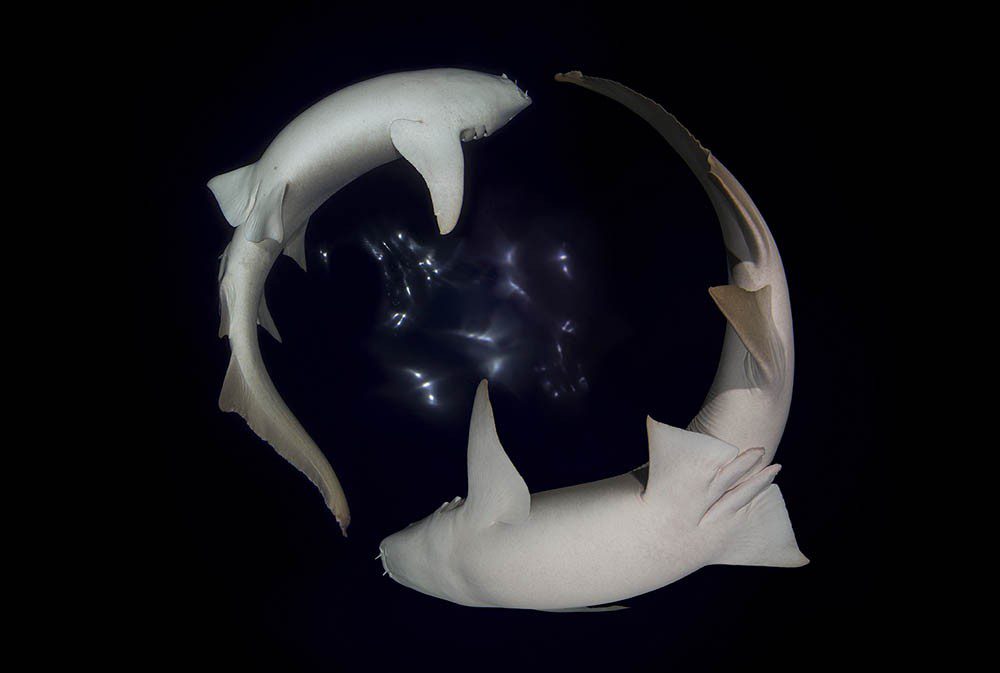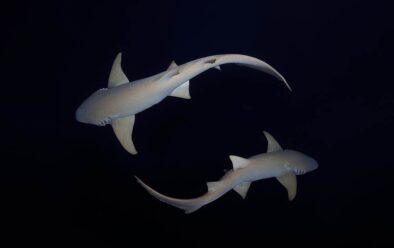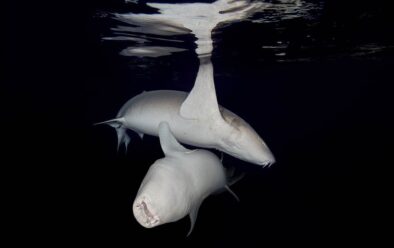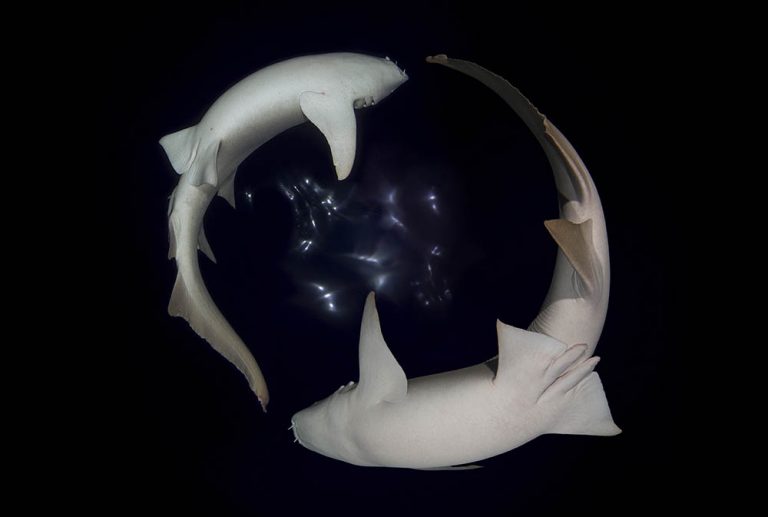SHARK DIVER
Dance of the Nurses
ANDREY NEKRASOV witnesses an amorous nocturnal encounter in the Maldives

I TOOK THESE PHOTOGRAPHS in Vaavu Atoll in the Maldives when, snorkelling by night, I watched the unusual behaviour of a male and female tawny nurse shark for more than 20 minutes.
These carpet sharks are found in shallow coastal areas of the tropical Indian and Pacific Oceans, no deeper than about 70m. Their reddish-brown colour is reflected in a Latin name suggestive of rust, Nebrius ferrugineus.

At 2.5 to 3m long they are certainly big enough for those “heroic” photographs but are not intimidating. Faces are characterised by that “moustache”, the photogenic tail accounts for a quarter of their body-length, and their disposition is peaceful, phlegmatic even, although any diver showing excessive familiarity is likely to be vigorously repelled.
Many Indian Ocean dive-centres offer nurse-shark night-dives. That’s because these predators rest during the daylight hours, stretched out at the bottom of gullies or under a reef canopy, sometimes in quite large groups.
They hunt nocturnally, feeding on reef fish, crustaceans, cephalopods and even sea urchins. If they can’t get their heads into the reef cavities in which their prey lurks, it doesn’t matter – using a strong sucking action they can draw it into their mouth on a stream of water.
This produces a characteristic smacking sound – a sort of goodnight kiss from the nurse.
Appeared in DIVER November 2018
IF YOU’RE LUCKY, as I was that night, you might get to see the mating dance that is this sharks’ means of reproduction.

Fertilisation, as in mammals, is internal, so the male tries to sink his teeth into the female’s pectoral fin and, when he succeeds, to turn her on her back so that he can introduce into her cloaca his pterygopodia – tubular protuberances on the anal fins.
This process can take a while, and results in the extended, writhing dance that I witnessed.
Pregnancy lasts about six months. The embryos get their nourishment from undeveloped eggs in the uterus and it seems to be a matter of survival of the fittest, with the result that litters rarely number more than four baby sharks, the biggest some 80cm long.
Sadly, these sharks are a target for both sports and industrial fishers. And the destruction by man of their natural habitat and the reduction of their food base has forced the IUCN to assign this charming shark the status of Vulnerable Species.

